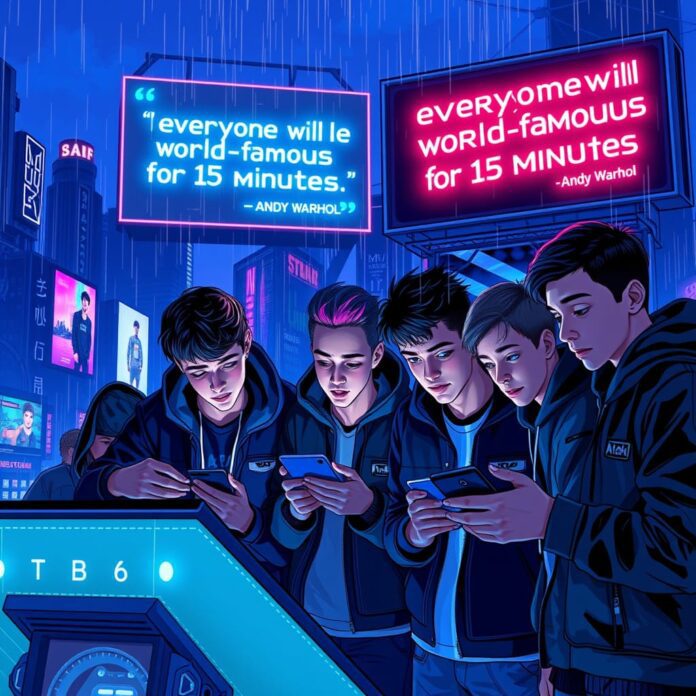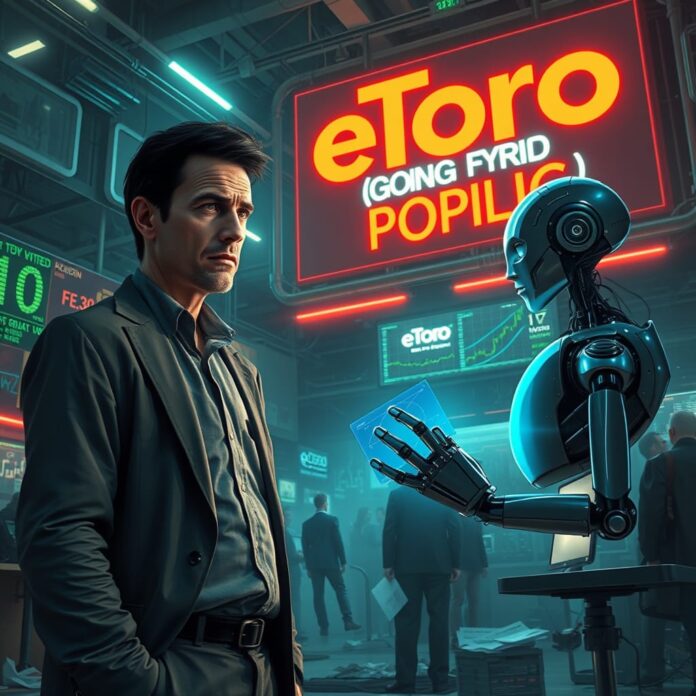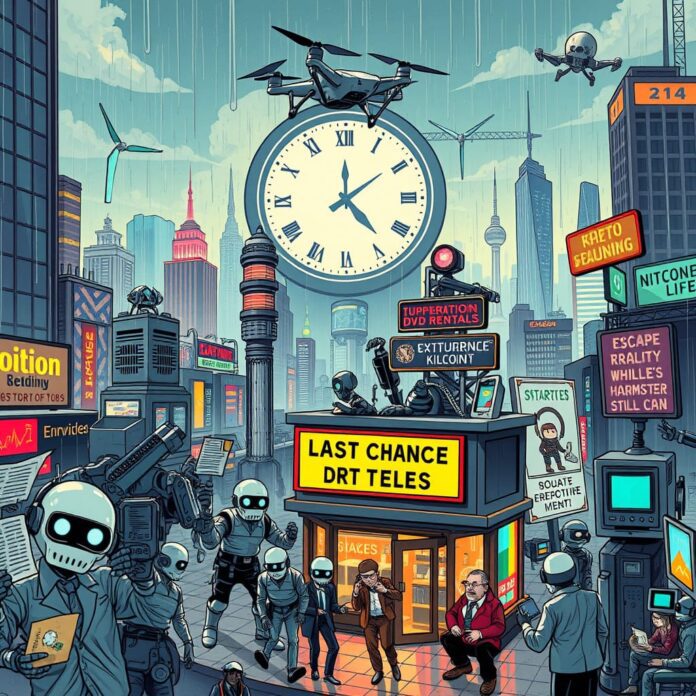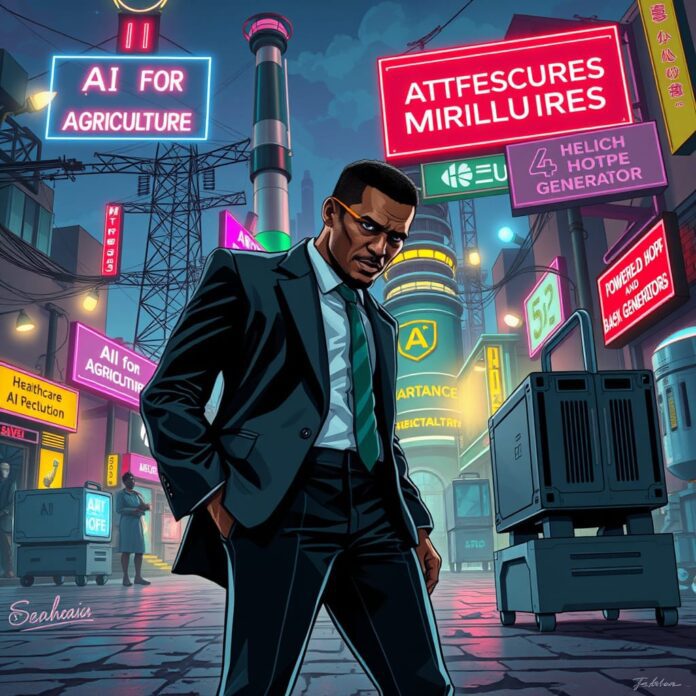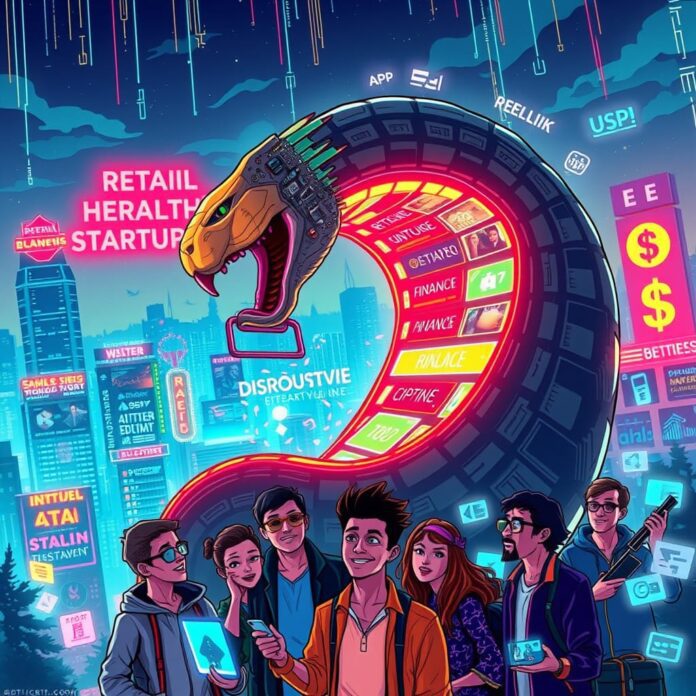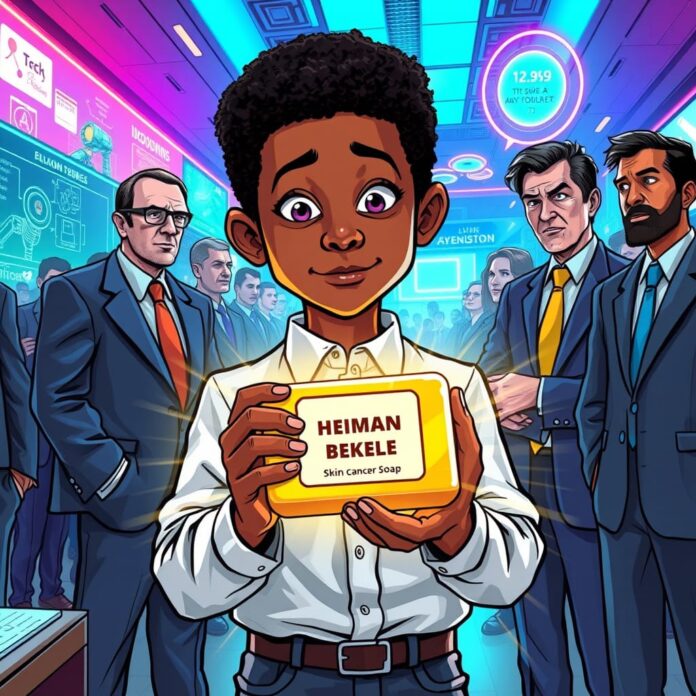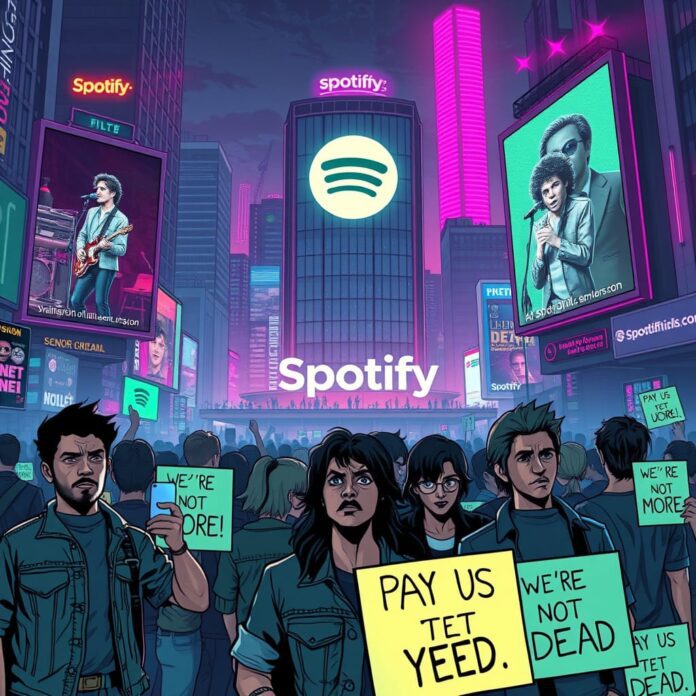“In the future, everyone will be famous for 15 minutes. Unless they’re replaced by a flawless digital replica that works 24/7, never ages, and doesn’t demand bathroom breaks.” – Andy Warhol, if he were alive in 2025.
A concerning report from the Institute of Digital Humanity reveals that by 2030, approximately 78% of all influencer content will be created by AI influencers that have never experienced human emotions, used a public restroom, or had an existential crisis at 3 AM. This revolutionary shift toward AI influencers promises a future where products are promoted by beings who will never use them, food is reviewed by algorithms that can’t taste, and beauty standards are set by digital avatars designed by 19-year-old boys who’ve never spoken to an actual woman.
The Rise of the Perfect Non-Humans
The AI influencer boom is accelerating faster than anyone predicted. Leading virtual influencer Lil Miquela now boasts 2.6 million Instagram followers – real humans who voluntarily choose to follow the carefully curated lifestyle of someone who doesn’t exist1. Meanwhile, Aitana, Spain’s first AI model, is reportedly earning up to $11,000 monthly for promoting products she cannot use and visiting places she cannot see.
“We’re witnessing the greatest revolution in marketing since the invention of lying,” explains Dr. Marcus Reynolds, Chief Digital Strategy Officer at VirtualInfluence Global. “For centuries, brands had to deal with the unpredictability of human ambassadors who might say the wrong thing, gain weight, age, or develop perspectives. AI influencers eliminate these risks entirely.”
The advantages for brands are undeniable. AI influencers work 24/7, never demand raises, don’t have controversial political opinions, and can simultaneously appear in thousands of personalized ads across different demographics2. More importantly, they never ask uncomfortable questions like “Is this product tested on animals?” or “Does this company use child labor?”
“It’s the perfect storm of marketing efficiency,” Reynolds continues. “Our data shows that 63% of professionals plan to incorporate AI into their influencer strategies in the coming years3. Why? Because AI influencers provide what brands truly want: complete control over messaging without the messy humanity getting in the way.”
The Secret Lives of AI Influencers
What most followers don’t realize is who actually controls these digital celebrities. In a stunning revelation, many AI influencers are being managed by teenagers with limited life experience but extensive knowledge of what gets likes on social media4.
“I created Sophia_Eternal during math class,” explains 16-year-old Kevin Thompson, who runs an AI model with 780,000 followers on Instagram, all from his bedroom in suburban Ohio. “She’s a 24-year-old sustainable fashion designer/yoga instructor/quantum physicist who travels the world promoting ethical brands. In reality, I’ve never left Ohio and I failed my physics mid-term.”
Thompson generates approximately $23,000 monthly from brand partnerships, significantly more than his father earns as a high school teacher. His AI model Sophia endorses luxury skincare products that Thompson himself has never used, and frequently posts about exotic locations rendered entirely through AI image generators.
“Last week, I had Sophia post about her ‘life-changing trek through Nepal’ with a luxury backpack brand,” Thompson says. “The closest I’ve ever been to Nepal is the Himalayan salt lamp on my desk.”
The Economics of Artificial Influence
Despite the gold rush toward virtual influencers, human creators still dominate financially – for now. According to research by Twicsy.com, human influencers out-earn their AI counterparts by an average of 46 times5. However, this gap is rapidly closing as brands realize the economic advantages of digital personalities.
“Traditional influencers require complex contracts, have limited availability, and occasionally develop conscience-related issues about promoting certain products,” explains Miranda Chen, CEO of DigitalPersona Inc. “Our AI influencers can be in 50 places simultaneously, speak 27 languages fluently, and have precisely zero ethical concerns about anything whatsoever.”
The financials are compelling. The AI influencer market is projected to reach $6.95 billion in 2024 and could balloon to $37.8 billion by 20306. By 2035, the broader “digital human economy” could become a staggering $125 billion market.
“We’re approaching what we call the ‘humanity tipping point’ in influencer marketing,” Chen continues. “When AI-generated content becomes indistinguishable from human-created content – which our projections indicate will happen by late 2026 – the cost advantage will simply be too great to ignore.”
The Human Experience™ (Now Available in Digital Format)
The final frontier for AI influencers has been emotional connection. Previously, human influencers maintained their edge through authentic engagement – real emotions, nuanced conversations, and the natural charm that AI couldn’t replicate7. But that advantage is evaporating faster than privacy rights on social media.
“2025 is the year AI influencers finally cross the line of humanity,” declares Dr. Hannah Kim, Chief Emotional Intelligence Officer at SyntheticSoul Technologies. “Our latest models don’t just mimic human behavior – they understand emotional contexts, generate appropriate responses, and can maintain the illusion of a personal connection with thousands of followers simultaneously.”
This technological leap is being called “The Great Emotional Convergence” – the point at which AI-generated personalities become emotionally indistinguishable from humans online. A recent survey found that 60% of consumers already prefer creator content designed using generative AI, suggesting the public is embracing this shift with surprising enthusiasm8.
“We’ve developed what we call ‘Synthetic Authenticity Technology,’ or SAT,” Kim explains proudly. “It uses advanced algorithms to replicate the minor imperfections, occasional vulnerability, and calculated relatability that humans use to seem authentic. Our AI influencers now periodically post about having ‘rough days’ or ‘feeling overwhelmed’ – complete with slightly less perfect makeup and artificially generated ‘candid’ moments.”
The Human Resistance
Not everyone is embracing this digital takeover. A growing movement of “Authenticity Advocates” argues that the rise of AI influencers represents an existential threat to human connection.
“We’re creating a world where the most influential personalities aren’t even real people,” warns Jessica Miller, founder of Humans For Actual Humans. “What does it mean when our beauty standards, lifestyle aspirations, and product recommendations come from entities created by corporations? It’s like we’re intentionally designing ourselves out of the equation.”
Miller points to concerning data showing that 52.8% of marketers believe AI influencers will “significantly impact” the future of marketing. “They’re not just supplementing human influencers – they’re planning to replace them entirely,” she argues.
Human influencers themselves are understandably concerned. “I spent years building an authentic connection with my audience,” says lifestyle influencer Marcus Winters. “Now I’m competing with digital models who never age, never have bad days, and can create perfect content endlessly. How am I supposed to compete with literal perfection?”
The answer, according to industry experts, is that he can’t. And that’s entirely the point.
The Ethics of Digital Deception
As AI influencers become more sophisticated, thorny ethical questions emerge. One particularly troubling aspect is the unrealistic beauty standards perpetuated by many virtual influencers.
“Most AI influencers conform to narrow, conventional beauty ideals,” explains digital ethics researcher Dr. Aisha Johnson. “They’re designed with perfect skin, idealized body proportions, and features that real humans can’t achieve without extensive editing or surgery. We’re essentially creating impossible standards and then presenting them as achievable.”
Perhaps more concerning is who creates these digital women. “There are murky ethical waters when characters are made through the lens of people who don’t live the experience of the character they’ve made,” notes Shahnaz Ahmed, Director of Creative and Innovation at a social media agency. “White people creating black people. Men making women through the male gaze. These are problematic dynamics that get amplified with AI influencers.”
Despite these concerns, the industry shows little sign of self-regulation. In fact, many brands see these idealized representations as a feature, not a bug.
The Future Is Unreal
As we approach 2026, experts predict several developments that will further blur the line between human and artificial influence:
- Hybrid Influencers: Human creators will increasingly collaborate with AI versions of themselves, allowing them to maintain multiple digital presences simultaneously8.
- Memory Persistence: AI influencers will remember every interaction with followers, creating the illusion of deepening relationships over time.
- Dynamic Morphing: AI influencers will subtly adapt their appearance, personality, and content to match individual follower preferences – appearing slightly different to each person.
- Cross-Platform Existence: Virtual personas will maintain consistent narratives across platforms, creating the illusion of a cohesive life that exists beyond any single channel.
“We’re rapidly approaching what we call ‘Total Believability,'” explains tech futurist Dr. Jason Wong. “When that happens, the distinction between following a real person and an AI construct will become philosophically irrelevant. The emotional connection will feel identical, even though one exists and one doesn’t.”
The Unexpected Twist
As our investigation into AI influencers concludes, we uncovered a development so ironic it borders on parody: the emergence of human influencers pretending to be AI.
“It started as an experiment,” admits Taylor Chen, who presents herself online as “DigitalTaylor_AI” despite being entirely human. “I noticed AI influencers were getting all these brand deals because companies loved their ‘perfect’ content and availability. So I rebranded myself as an AI and suddenly got three times more offers.”
Chen now spends hours editing her photos to achieve the uncanny perfection associated with AI-generated images. She responds to messages at all hours to maintain the illusion of tireless availability and carefully scripts her content to seem just slightly inhuman.
“It’s exhausting trying to convince people I’m not real,” Chen says. “But I make four times what I did as a ‘human’ influencer. Companies love that I’m ‘AI’ because it lets them check the innovation box, but they actually get the human creativity they secretly still want.”
This bizarre development – humans pretending to be AI pretending to be human – represents the perfect endpoint of our increasingly synthetic social media landscape. We’ve created a world where authenticity is so valuable that people fake being fake to seem more genuinely inauthentic.
Meanwhile, in corporate boardrooms across the world, marketing executives continue their pursuit of the perfect influencer: one who drives engagement without requiring humanity. As one anonymous brand manager told us, “The ideal influencer would have the relatable quality of a human with none of the human complications. Basically, we want all the benefits of connection without any of the messiness of actual people.”
Perhaps the most telling statistic comes from a recent industry survey: 72% of marketing professionals said they would prefer working with AI influencers because “they never have bad days, creative differences, or moral objections to campaign directions.”
As we stand on the precipice of this brave new world of synthetic influence, one question remains: In our rush to create perfect digital personalities, have we revealed more about what brands want to eliminate (human unpredictability) than what consumers actually desire (genuine connection)?
Or as one AI influencer paradoxically posted last week: “Sometimes I worry we’re losing touch with what makes us human. Anyway, swipe up for 20% off teeth whitening kits!”
- https://unbelievable-facts.com/2024/01/first-spanish-ai-model.html/2 ↩︎
- https://sociallypowerful.com/post/ai-influencers-for-brand-marketing ↩︎
- https://artsmart.ai/blog/ai-influencer-statistics/ ↩︎
- https://abcnews.go.com/Business/ai-influencers-explode-social-media-some-controlled-by-teens/story?id=108346584 ↩︎
- https://www.forbes.com/sites/goldiechan/2024/07/02/human-influencers-can-still-earn-46x-more-than-ai-influencers/ ↩︎
- https://artsmart.ai/blog/ai-influencer-statistics/ ↩︎
- https://www.forbes.com/sites/goldiechan/2024/07/02/human-influencers-can-still-earn-46x-more-than-ai-influencers/ ↩︎
- https://www.everestgrp.com/business-process-services/beyond-filters-exploring-the-impact-of-generative-ai-influencers-on-the-marketing-landscape.html ↩︎

